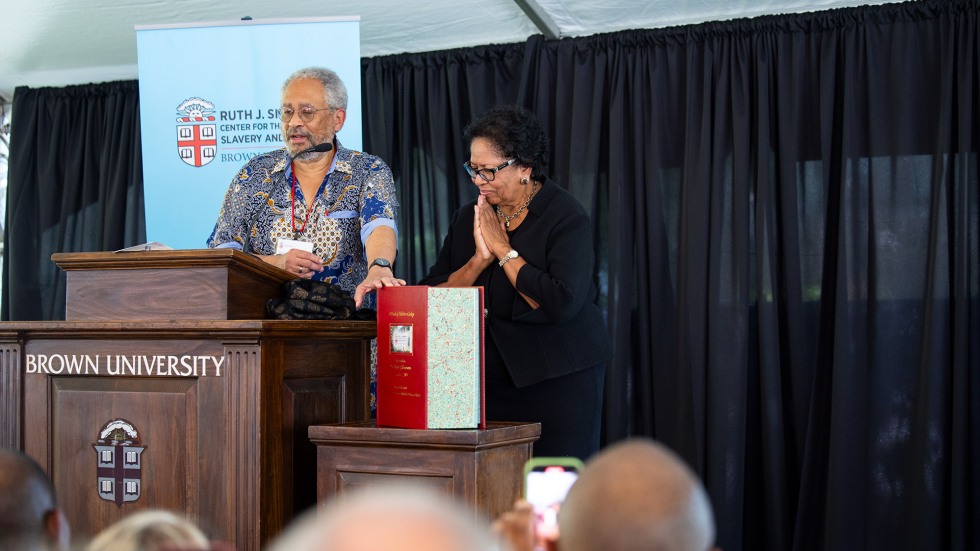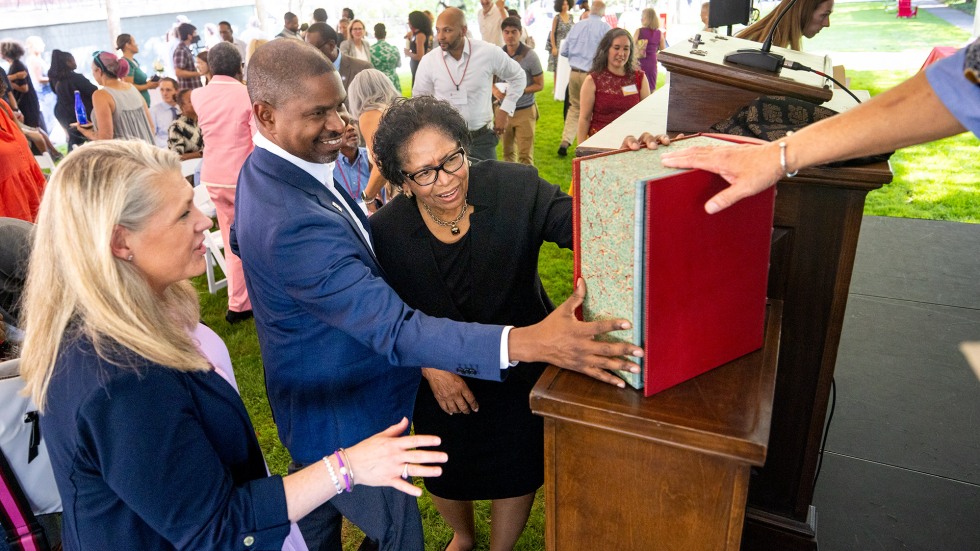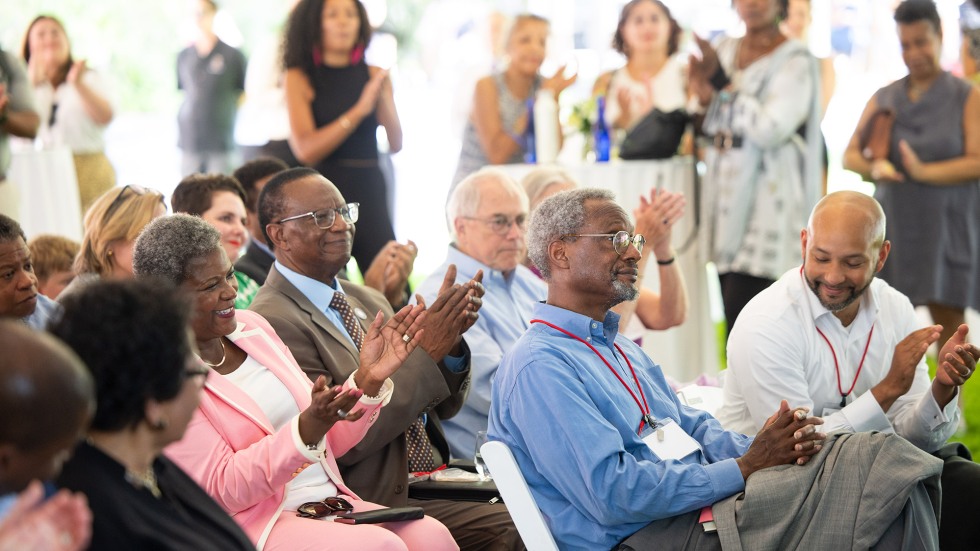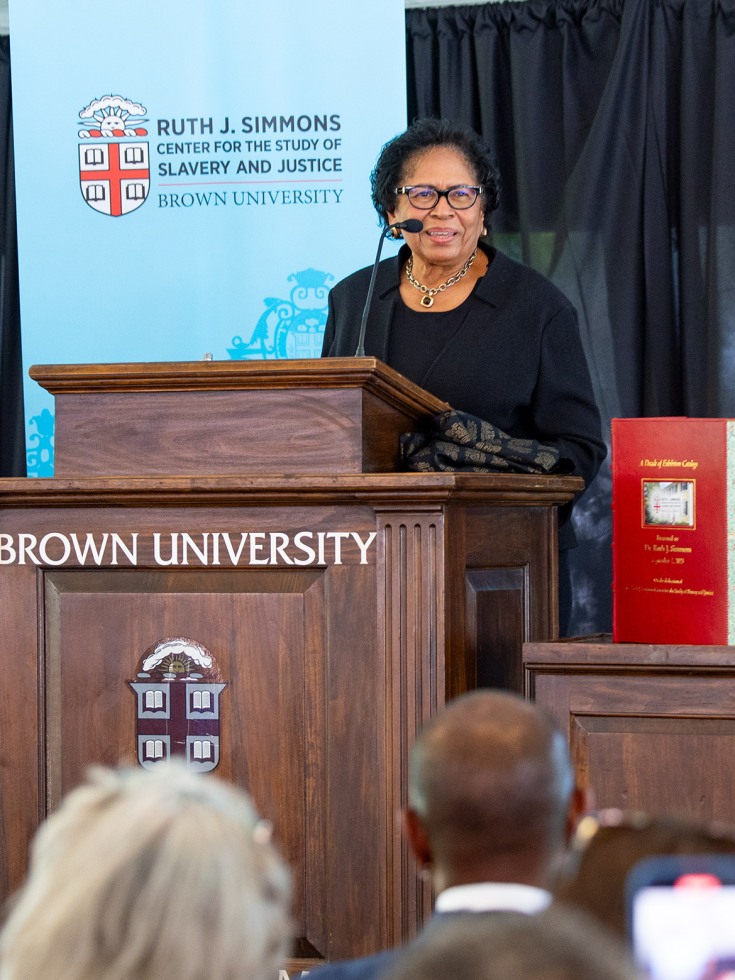PROVIDENCE, R.I. [Brown University] — On a bright and steamy afternoon on College Hill, members of the Brown University community came together to honor one of its most revered figures: President Emerita Ruth J. Simmons.
Led by Professor Anthony Bogues, who directs the Ruth J. Simmons Center for the Study of Slavery and Justice at Brown, the crowd of celebrants recognized Simmons’ legacy, which was foundational to the creation of the center that now bears her name.
The event was also an occasion to celebrate the 10-year-old center’s research, scholarship and community engagement, and its broad impact on campus and around the world. Simmons, who served as president of Brown from 2001 to 2012, was on hand for the celebratory unveiling of the newly renamed center, and she urged the work to continue.
“Brown is always cited — always cited — as the place that set the model for how to do this work well,” said Simmons, Brown’s 18th president. “One of the best things we do as human beings is continue the work of justice. I can’t think of anything that is more humanizing than applying ourselves to that in every generation.”
The event, held on Thursday, Sept. 7, outside the center at 94 Waterman St., marked a major milestone for the center, which just celebrated its 10th anniversary. It followed a March event at the Smithsonian Institution’s National Museum of African American History and Culture in Washington, D.C., where news of the renaming was announced as part of the center’s anniversary celebration.



